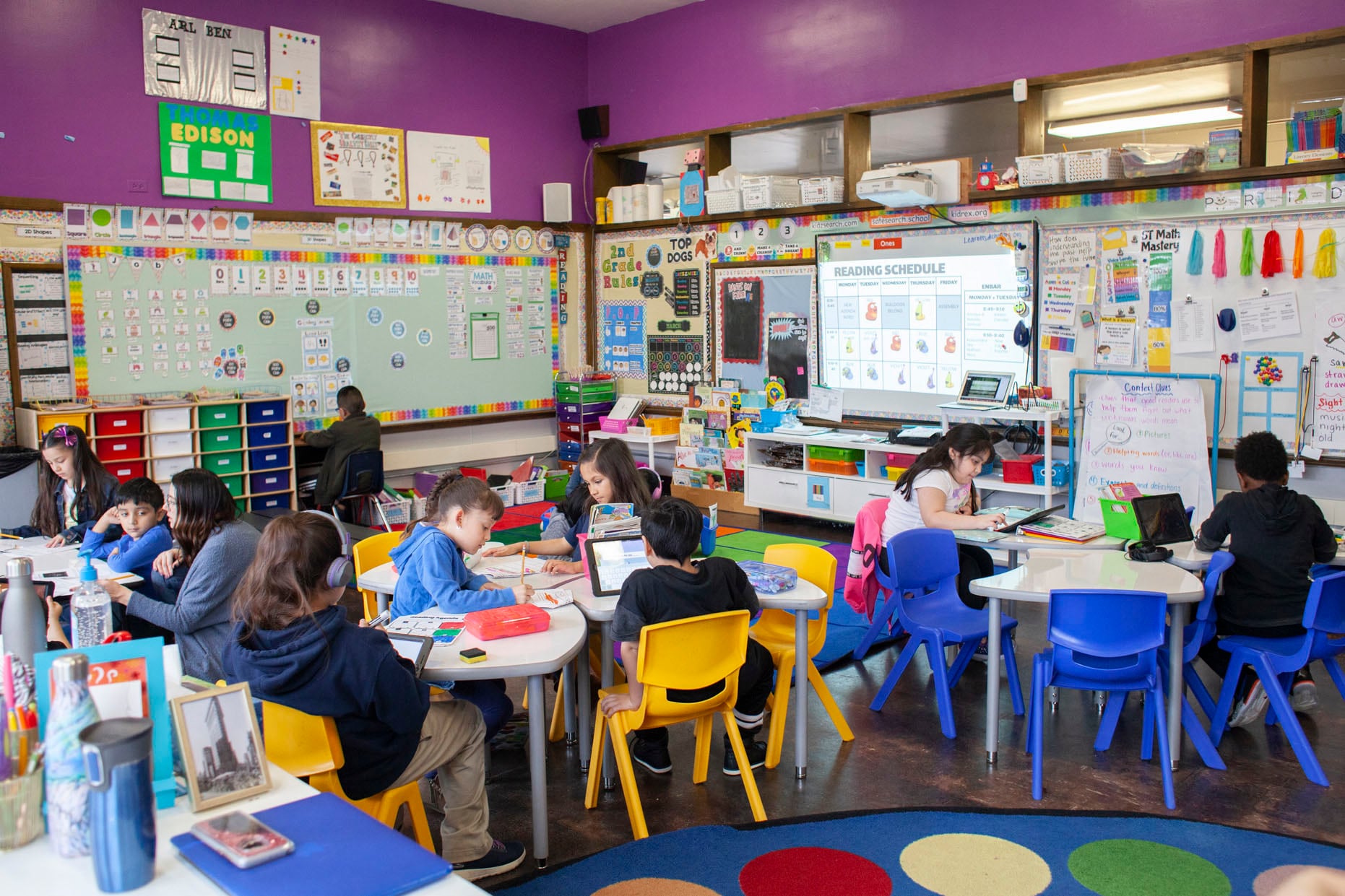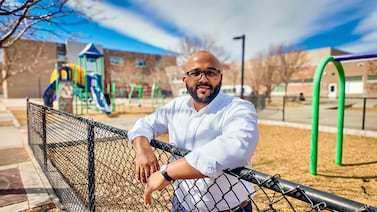Sign up for Chalkbeat Chicago’s free daily newsletter to keep up with the latest education news.
Amid a bump in students learning English as a new language and a dip in local tax revenue, Chicago Public Schools would now need nearly $1.2 billion to be adequately funded, according to state data released Monday.
The updated figure, which is $93 million more than was projected last year, was provided as part of an annual calculation determining how Illinois will distribute state money to public school districts — and comes as the city’s school district grapples with complex financial problems in the next school year.
Still, Chicago gets about 21% of the funding distributed through the state’s evidence-based formula — which allocates money to districts based on their students’ needs — but serves about 18% of Illinois’ students, said State Superintendent Tony Sanders.
“I think it’s important to note that we still have districts that are below what Chicago was funded,” Sanders said.
Data show 49 Illinois districts are still below 70% adequately funded, compared to 72 districts last year and 430 districts in 2018, right after the state’s funding formula was revamped. Chicago is considered 79% adequately funded.
Districts with greater shares of students with high needs, such as English language learners or low-income students, receive more money under the funding formula. In Chicago’s case, the district’s recent increase in English language learners impacted its adequacy calculation.
In a statement, CPS spokesperson Mary Ann Fergus said the district is “committed to working with our local, state and federal partners” to find more money for students and schools. But the district, which has previously asked Illinois leaders to provide more funding, acknowledged that significantly more money is not coming through this year.
“District leadership recognizes that achieving state funding at the 90 to 100 percent adequacy level for CPS and all districts in Illinois will take time and was not intended to be reached by Fiscal Year 2025,” Fergus wrote.
A closer look at state funding for Chicago
The Chicago Board of Education recently passed a $9.9 billion budget that closed a roughly half-billion-dollar deficit driven largely by the loss of federal COVID relief dollars.
CPS is expected to receive an additional $25.8 million from the state’s evidence-based funding formula for the coming 2024-25 school year. The district also gets state money earmarked for other education initiatives, such as $284 million for early childhood education, according to the district’s adopted budget. CPS’s budget includes a total of $2.6 billion in state funding.
Thousands of migrant families have arrived in Chicago over the past two years, fleeing political and economic strife in South and Central American countries. Amid that shift, Chicago Public Schools enrolled roughly 5,700 more students learning English as a new language in September 2023, compared to the same time in 2022, according to official district data. And over the course of last school year, between last September and this May, more than 7,500 English language learners enrolled across district and charter schools, for a total of more than 85,000 such students, according to preliminary CPS data analyzed by Chalkbeat.
A dip in local revenue also had an impact on how much funding the state calculation indicates Chicago needs. Sanders cited a dip in tax revenue imposed on corporate profits, plus “modest growth” in property values.
The data released by the state Monday focuses on the money distributed through the evidence-based funding formula, which directs more money to districts with higher needs that lack enough local wealth to cover costs.
Most school districts, including Chicago Public Schools, rely primarily on local property taxes to fund public schools. In Chicago, more than $5 billion is collected from local taxes, $4 billion of which is directly from property taxes.
Illinois boosts K-12 funding by $2 billion since 2017
Data shows Illinois has increased funding for public schools by $2 billion since overhauling the funding formula in 2017. In a news release, Gov. J.B. Pritzker said the state will “continue to build on our progress” to ensure every student “gets the quality education they deserve.”
Sanders said that compared to other states, Illinois is investing “more and more” annually into public education that has helped schools get through the pandemic “and sustain their growth” through COVID.
“I think the state deserves credit for continuing that investment year over year, recognizing we’re not there yet,” Sanders said.
State lawmakers decide every spring how much money to send to Illinois’ 852 school districts. In August, the Illinois State Board of Education finalizes the dollar amounts each district will receive.
Illinois divides school districts into four tiers in order to determine how to distribute the money allocated by state lawmakers. Tier 1 districts get the largest increases in state funding because they are considered to be the furthest away from having enough money to sufficiently fund schools; Tier 4 districts are those with the least amount of need and get smaller increases.
One report, penned by a budget watchdog organization whose leader helped craft the state’s funding formula, estimates that districts won’t be adequately funded until 2034 – seven years later than the state had originally committed.
Chicago, the state’s largest district, was a Tier 1 district until 2022, when it moved to Tier 2, as the share of the city’s low-income students dipped and property wealth grew.
Illinois’ second largest school district, U-46, which serves Elgin, Bartlett, Streamwood, and other northwest Chicago suburbs, serves 40,000 students and is considered a Tier 1 district that is 71% adequately funded. That district would need another $173 million to close that gap, according to state data.
The teachers union, as well as CPS and the board, have called on the state to provide more funding to help cover costs, which could still grow this year as officials negotiate new collective bargaining agreements for teachers and school leaders. Officials also don’t yet have a plan for covering $175 million in pension payments for non-teaching staff, which the district wants the city to cover, as it did before Mayor Lori Lightfoot’s administration.
Pritzker has said more money is not coming this year. Sanders reiterated that on Monday.
“The EBF funding formula is used not just for Chicago, but for funding all 852 school districts across the state,” Sanders said. “It is a fair way of distributing funds across the state, it is going to lead us to better equity in the long run, so no, there are not going to be any short-term changes.”
City Hall also directed CPS to take out a loan to cover additional costs; the district pushed back and has not yet taken out such a loan.
The state also released a report Monday detailing trends of how districts across the state had planned to use state funding.
Tier 1 districts were more likely to make lowering or maintaining class sizes a top strategy for improving student achievement, the report said. Overall, nearly a quarter of all districts said that improving programs, curriculum, and/or “learning tools” was a top strategy, while another 15% were primarily focused on maintaining or improving extra support for students.
Becky Vevea contributed.
Reema Amin is a reporter covering Chicago Public Schools. Contact Reema at ramin@chalkbeat.org.






